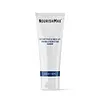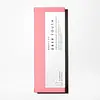What's inside
What's inside
 Key Ingredients
Key Ingredients

 Benefits
Benefits

 Concerns
Concerns

 Ingredients Side-by-side
Ingredients Side-by-side

Water
Skin ConditioningPropylene Glycol
HumectantSodium Silicate
BufferingMagnesium Aluminum Silicate
AbsorbentEuterpe Oleracea Fruit Extract
Perilla Frutescens Extract
Skin ConditioningQuercus Alba Bark Extract
AstringentChondrus Crispus Extract
Skin ConditioningSodium Hyaluronate
HumectantGlycerin
HumectantLactobacillus Ferment
Skin ConditioningButylene Glycol
HumectantAcetyl Hexapeptide-8
HumectantPentapeptide-18
Skin ConditioningDipeptide Diaminobutyroyl Benzylamide Diacetate
Skin ConditioningAcetyl Octapeptide-3
HumectantPalmitoyl Tripeptide-1
Skin ConditioningPalmitoyl Tetrapeptide-7
Skin ConditioningCellulose Gum
Emulsion StabilisingCarbomer
Emulsion StabilisingCaprylyl Glycol
EmollientPolysorbate 20
EmulsifyingPotassium Sorbate
PreservativeCitric Acid
BufferingChlorphenesin
AntimicrobialSodium Dehydroacetate
PreservativeSodium Lactate
BufferingPhenoxyethanol
PreservativeEthylhexylglycerin
Skin ConditioningWater, Propylene Glycol, Sodium Silicate, Magnesium Aluminum Silicate, Euterpe Oleracea Fruit Extract, Perilla Frutescens Extract, Quercus Alba Bark Extract, Chondrus Crispus Extract, Sodium Hyaluronate, Glycerin, Lactobacillus Ferment, Butylene Glycol, Acetyl Hexapeptide-8, Pentapeptide-18, Dipeptide Diaminobutyroyl Benzylamide Diacetate, Acetyl Octapeptide-3, Palmitoyl Tripeptide-1, Palmitoyl Tetrapeptide-7, Cellulose Gum, Carbomer, Caprylyl Glycol, Polysorbate 20, Potassium Sorbate, Citric Acid, Chlorphenesin, Sodium Dehydroacetate, Sodium Lactate, Phenoxyethanol, Ethylhexylglycerin
Water
Skin ConditioningPEG-35 Castor Oil
EmulsifyingAscorbic Acid
AntioxidantGlycerin
HumectantRetinyl Palmitate
Skin ConditioningCaprylyl Glycol
EmollientTocopherol
AntioxidantAcetyl Hexapeptide-8
HumectantAcetyl Octapeptide-3
HumectantPentapeptide-18
Skin ConditioningArginine Aspartate
Skin ConditioningCobalt Gluconate
Skin ConditioningCopper Gluconate
Skin ConditioningPyridoxine Hcl
Skin ConditioningValine
MaskingZinc Chloride
AntimicrobialThiamine Hcl
MaskingPropylene Glycol
HumectantSodium Hyaluronate
HumectantPhenoxyethanol
PreservativeEthylhexylglycerin
Skin ConditioningAvena Sativa Kernel Extract
AbrasiveWater, PEG-35 Castor Oil, Ascorbic Acid, Glycerin, Retinyl Palmitate, Caprylyl Glycol, Tocopherol, Acetyl Hexapeptide-8, Acetyl Octapeptide-3, Pentapeptide-18, Arginine Aspartate, Cobalt Gluconate, Copper Gluconate, Pyridoxine Hcl, Valine, Zinc Chloride, Thiamine Hcl, Propylene Glycol, Sodium Hyaluronate, Phenoxyethanol, Ethylhexylglycerin, Avena Sativa Kernel Extract
Ingredients Explained
These ingredients are found in both products.
Ingredients higher up in an ingredient list are typically present in a larger amount.
Acetyl Hexapeptide-8, commonly known as Argireline or Acetyl Hexapeptide-3, is a popular peptide in skincare. It’s often referred to as a “Botox-like” ingredient because it helps reduce muscle movement.
By relaxing these micro-movements, Argireline may help minimize the appearance of fine lines and wrinkles. That said, it’s not as powerful as Botox, and research on its long-term effectiveness is still limited.
Beyond smoothing, Argireline may also support collagen production. Collagen is the protein that helps keep your skin firm, bouncy, and well-hydrated by strengthening the skin barrier.
So while Argireline isn’t a miracle fix, it can be a helpful addition to a routine focused on both prevention and skin health.
Read more about other common types of peptides here:
Learn more about Acetyl Hexapeptide-8Acetyl Octapeptide-3 is a synthetic peptide also commonly known as SNAP-8. It is a lab-made peptide often marketed as a gentler, topical alternative to Botox.
It works by mimicking part of a protein involved in muscle contractions, which may help relax facial tension and reduce the appearance of fine lines (mostly around the eyes and forehead).
It’s considered a “next-gen” version of Argireline (Acetyl Hexapeptide-8), an older peptide with more research behind it that also supports collagen production.
SNAP-8 showed slightly better results than Argireline in one small manufacturer-funded study, but there’s limited independent research. Plus, most tests use concentrations higher than what’s typically found in skincare products.
This ingredient might offer a subtle smoothing effect but it won't don’t deliver the dramatic results of actual Botox injections.
Think of it more like a supporting actor in your skincare lineup.
Learn more about Acetyl Octapeptide-3Caprylyl Glycol is a humectant and emollient, meaning it attracts and preserves moisture.
It is a common ingredient in many products, especially those designed to hydrate skin. The primary benefits are retaining moisture, skin softening, and promoting a healthy skin barrier.
Though Caprylyl Glycol is an alcohol derived from fatty acids, it is not the kind that can dry out skin.
This ingredient is also used as a preservative to extend the life of products. It has slight antimicrobial properties.
Learn more about Caprylyl GlycolEthylhexylglycerin (we can't pronounce this either) is commonly used as a preservative and skin softener. It is derived from glyceryl.
You might see Ethylhexylglycerin often paired with other preservatives such as phenoxyethanol. Ethylhexylglycerin has been found to increase the effectiveness of these other preservatives.
Glycerin is already naturally found in your skin. It helps moisturize and protect your skin.
A study from 2016 found glycerin to be more effective as a humectant than AHAs and hyaluronic acid.
As a humectant, it helps the skin stay hydrated by pulling moisture to your skin. The low molecular weight of glycerin allows it to pull moisture into the deeper layers of your skin.
Hydrated skin improves your skin barrier; Your skin barrier helps protect against irritants and bacteria.
Glycerin has also been found to have antimicrobial and antiviral properties. Due to these properties, glycerin is often used in wound and burn treatments.
In cosmetics, glycerin is usually derived from plants such as soybean or palm. However, it can also be sourced from animals, such as tallow or animal fat.
This ingredient is organic, colorless, odorless, and non-toxic.
Glycerin is the name for this ingredient in American English. British English uses Glycerol/Glycerine.
Learn more about GlycerinThis peptide is more commonly known as Leuphasyl. It has similar properties to argireline, the "botox peptide".
According to a manufacturer, Pentapeptide-18 mimics botulinum to freeze muscles and reduce the appearance of wrinkles. Their study found this 5% of this ingredient reduced wrinkles by 11%.
Combining this ingredient with Argireline showed improved results.
Learn more about Pentapeptide-18Phenoxyethanol is a preservative that has germicide, antimicrobial, and aromatic properties. Studies show that phenoxyethanol can prevent microbial growth. By itself, it has a scent that is similar to that of a rose.
It's often used in formulations along with Caprylyl Glycol to preserve the shelf life of products.
Propylene Glycol is an odorless, colorless liquid. As a humectant, it helps skin retain moisture. It also aids in delivering active ingredients.
Another role of this ingredient is preventing a product from melting or freezing. Propylene glycol also adds antimicrobrial properties to a product, elongating product lifespan.
This ingredient is considered an organic alcohol and commonly added into both cosmetics and foods.
Those with sensitive skin or conditions may develop a rash when using this ingredient.
Learn more about Propylene GlycolSodium Hyaluronate is hyaluronic acid's salt form. It is commonly derived from the sodium salt of hyaluronic acid.
Like hyaluronic acid, it is great at holding water and acts as a humectant. This makes it a great skin hydrating ingredient.
Sodium Hyaluronate is naturally occurring in our bodies and is mostly found in eye fluid and joints.
These are some other common types of Hyaluronic Acid:
Learn more about Sodium HyaluronateWater. It's the most common cosmetic ingredient of all. You'll usually see it at the top of ingredient lists, meaning that it makes up the largest part of the product.
So why is it so popular? Water most often acts as a solvent - this means that it helps dissolve other ingredients into the formulation.
You'll also recognize water as that liquid we all need to stay alive. If you see this, drink a glass of water. Stay hydrated!
Learn more about Water